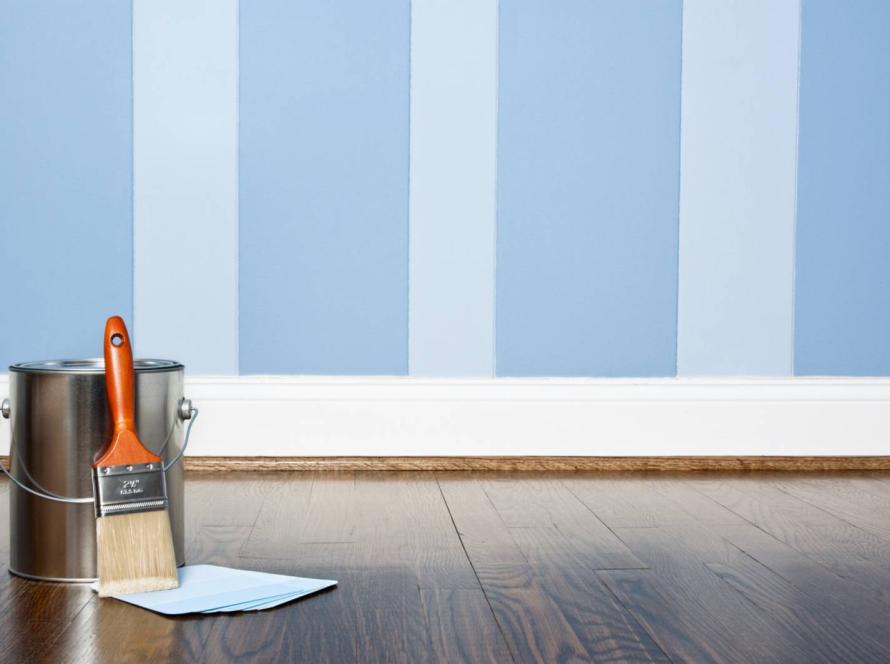You want to paint the exterior of your stucco house, but you aren’t sure about the best practices. So… what now?
We’ve got you covered. Today, we’re providing you with a step-by-step guide to paint your stucco house with confidence and achieve results that light up your block!
Understanding Stucco

Stucco is a type of plaster used on the outside of homes. It’s made from cement, sand, and lime.
This mixture is durable and gives houses a textured look that many people like. Stucco’s popularity comes from its ability to withstand harsh weather and its low cost of maintenance.
Painting a stucco house is not the same as painting a house with smooth walls. Stucco’s surface is rough and porous.
This means it has many small holes. Paint can have a hard time sticking to it properly. Before you start painting, it’s important to prepare the surface well.
If not, you might end up with paint that peels off or doesn’t look even.
Stucco also tends to crack and wear over time. Small cracks can let water seep in. This can cause bigger problems down the line.
Because of this, part of preparing to paint a stucco house involves checking the entire surface. You need to repair any damage you find. This step ensures that your paint job will not only look good but also last longer.
Preparing and painting a stucco house takes time and effort. But with the right approach, you can have a beautiful and durable finish. The key is not to rush and to pay attention to details, from cleaning the surface to applying paint correctly.
Preparation: The Key to Success
Before you start painting your stucco house, cleaning the exterior is a must. Over time, dust, dirt, and other materials can build up on the stucco surface.
If you paint over this dirt, the paint won’t stick well, and the finish won’t look nice. Use a pressure washer or a hose with a scrub brush to clean the stucco.
Be thorough but gentle. You want to remove dirt without damaging the surface. Let the stucco dry completely after cleaning.
This might take a day or two, depending on the weather.
Repairing Cracks and Damage
After cleaning, inspect the stucco for any cracks or damage. It’s normal for stucco to show signs of wear like small cracks.
However, you need to fix these issues before painting. Use exterior caulk or a stucco repair product to fill in cracks and holes. Apply the product according to the instructions and smooth it out so it blends with the surrounding area.
This step is important. It helps prevent water from getting behind the stucco and causing more damage. Let any repairs dry fully before moving on to the next step.
Primer Selection
Choosing the right primer is important for painting stucco. The primer helps the paint stick better and last longer. Look for a primer that’s made for use on stucco or masonry surfaces.
These primers are designed to fill in the pores of the stucco. This creates a smooth surface for the paint. A
Applying primer also helps block stains and prevents the paint from soaking into the stucco too much. This means you’ll use less paint and get a more even color.
Let the primer dry completely before you start painting. This usually takes at least 24 hours.
With a clean, repaired surface and the right primer, you’re setting the stage for a successful paint job.
Choosing the Right Paint and Tools
When it comes to painting a stucco house, not all exterior paints are the same. The best choice for stucco is a paint that’s flexible and can breathe.
This means the paint allows moisture to escape from the stucco, reducing the risk of damage underneath. Acrylic latex paints are often recommended for stucco because they have these qualities.
They come in a variety of finishes, from flat to glossy. A flat or low-sheen finish usually looks best on stucco, hiding imperfections and giving the house a modern look.
Paint Sprayer vs. Brushes and Rollers
The tools you use to apply paint can make a big difference in how your project turns out. A paint sprayer is a good choice for stucco because it can evenly coat the textured surface. Sprayers also save time on large projects.
However, they can be tricky to use and might cause overspray if you’re not careful. Brushes and rollers are more straightforward.
They allow for more control, especially around edges and tight spots. For stucco, rollers with a thick nap are best.
They help get paint into all the nooks and crannies. Using both tools together can be effective. Use a sprayer for large areas and a brush or roller for detail work and edges.
Selecting the right paint and tools for your stucco house is about balance. You need paint that protects and enhances the stucco, and tools that suit your skill level and the project’s needs. Acrylic latex paint offers durability and a suitable finish for stucco.
A combination of spraying and manual brushing or rolling can ensure thorough coverage and a professional-looking result. Take your time to practice if you’re new to using a sprayer, and always prepare your work area to avoid messes. With the right paint and tools in hand, you’re ready to move forward with confidence.
Painting Tips
Once your stucco is clean, repaired, and primed, you’re ready to start painting. If you’re using a paint sprayer, practice on a piece of cardboard first. This helps you get comfortable with the machine and adjust the spray pattern.
When painting, hold the sprayer at a consistent distance from the wall, moving in smooth, overlapping strokes. This technique helps ensure even coverage without missed spots or drips.
If you’re using brushes and rollers, dip the roller into the paint, making sure it’s not too saturated. Apply the paint in overlapping “W” or “M” patterns for maximum coverage.
Brushes are perfect for cutting in around windows, doors, and trim. Always work from top to bottom to catch any drips and keep your work neat.
Working With Professional Painters
Sometimes, it’s best to call in professional painters, especially if your house is large or the job seems too complex. Professionals have the experience, tools, and knowledge to handle the unique challenges of painting stucco.
They can do the job faster and with potentially better results than DIY. When choosing a professional, ask for references, check their previous work, and ensure they have experience with stucco.
Clear communication about your expectations and the project’s scope is key to a successful partnership.
Managing Overspray and Drips
Overspray and drips can turn a neat paint job into a messy one. If you’re using a sprayer, protect areas you don’t want to paint with plastic sheeting and painter’s tape.
Move any outdoor furniture or decorations away from the house. When using rollers or brushes, keep a wet cloth handy to wipe up any drips right away.
Paying attention to these details will help you achieve a professional-looking finish.
Whether you choose to DIY or hire professionals, the key to success lies in preparation, the right tools, and careful application. Taking your time to do each step properly will result in a beautiful, long-lasting finish that you can be proud of.
Post-Painting Care

Paint needs time to dry and cure properly. Curing is different from drying. While drying means the paint is no longer wet to the touch, curing means it has reached its maximum hardness and durability.
This process can take up to 30 days, depending on the type of paint and the weather conditions. During this time, it’s important to avoid washing or touching the painted surfaces.
If it rains shortly after you’ve finished painting, don’t panic. Most exterior paints are designed to withstand rain within a few hours after application, but it’s best to check the manufacturer’s recommendations just to be safe.
Long-Term Maintenance
Maintaining your stucco paint job doesn’t require a lot of work, but a little attention can go a long way in keeping your home looking great. Once a year, gently clean the walls with water from a hose and a soft brush.
This will remove any dirt or debris that has built up. Inspect the stucco for any cracks or chips in the paint. Small touch-ups can prevent water damage and extend the life of your paint job. Avoid using harsh chemicals or high-pressure washers, as these can damage the paint and stucco.
Taking care of your painted stucco house helps protect your investment and keeps your home looking its best. By following these steps for curing and maintenance, you’ll ensure that your paint job stands the test of time.
A Lasting Paint Job for Your Stucco House

Compare Quotes from Top-rated Painting Contractors in your area.
Painting a stucco house involves more than just applying a new coat of paint. It requires careful preparation, the right materials, and attention to detail.
Not sure where to start? Alpha Living can instantly pair you with top-rated remodeling contractors so you can compare options and save. Enter your zip here to find top-rated remodeling pros in your area and get free quotes!





Facebook
Comments